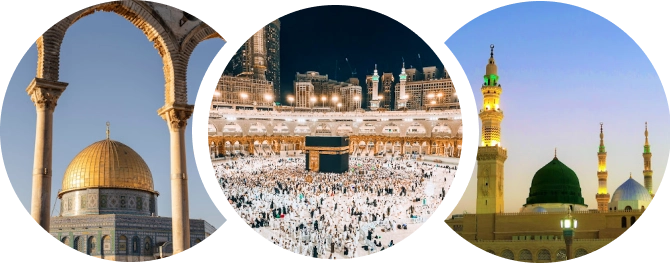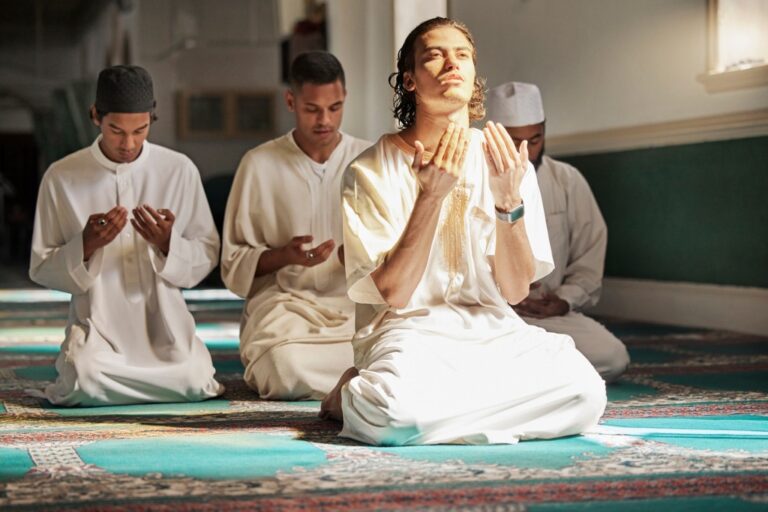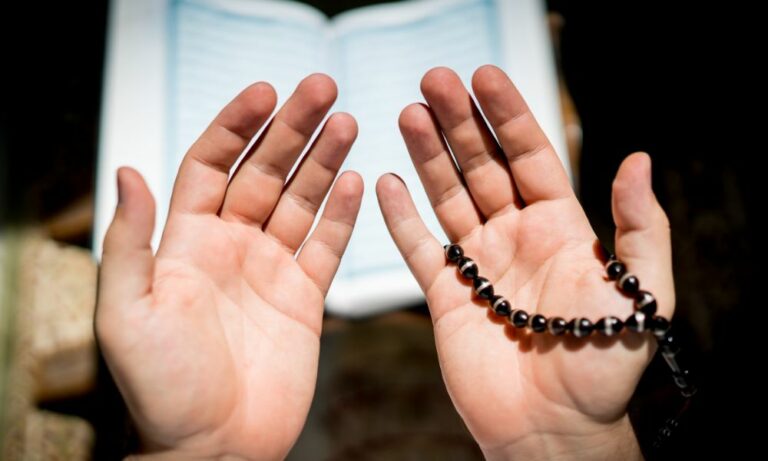How to Perform Dhuhr Prayer: Master Praying Dhuhr in Simple Steps!
Are you new to Islam or simply need a refresher on how to perform the Dhuhr prayer correctly? Dhuhr is a midday prayer, one of Islam’s five pillars and an essential act of submission and devotion.
We’ll walk you through everything in this comprehensive guide, from when to pray, the number of Rak’ahs involved, and its vital role in our spiritual journey.
Stay with us, and you’ll find strength and solace in this sacred act by the end, deepening your connection with Allah SWT every day at noon.
Understanding Dhuhr Prayer


Dhuhr prayer is performed at noon and consists of a specific number of Rakats.
What is Dhuhr Prayer?
Dhuhr prayer, also known as the noon prayer, holds a significant place in the daily rituals of practicing Muslims. It’s the fourth Islamic prayer of the day, typically performed when the sun descends towards the west from its zenith in the sky.
When to perform Dhuhr Prayer?
Marking the sun’s zenith is the commencement of Dhuhr prayer, standing as a significant part of every Muslim’s day. This noon prayer comes after Fajr (pre-dawn prayer) and precedes Asr (afternoon), Maghrib (evening), and Isha (night).
An ideal time for this daily Muslim obligation fluctuates between 12 PM and 1:30 PM, depending on each day and geographical location. The sun must descend towards the west from its peak before initiating these prayers, respecting their sacred nature and timing.
During summer months or extreme heat, consider delaying your Dhuhr Prayer to mitigate any discomfort you might face during your devotion. As Prophet Muhammad has also commanded in one of his hadith:
“ . قَالَ ابْنُ مَوْهَبٍ ” بِالصَّلاَةِ فَإِنَّ شِدَّةَ الْحَرِّ مِنْ فَيْحِ جَهَنَّمَ ” .
When the heat is violent, offer (the Zuhr) prayer when it becomes reasonably cool, for the violent heat comes from the bubbling over the Hell.
Asr starts at the end of Dhuhr, so Dhuhr ends when Asr starts. This makes a good time for worship.
Remember that different Islamic schools may have different ideas about certain times. Still, most of them agree on this shared framework.
How many Rak’ah are there in Dhuhr Prayer?
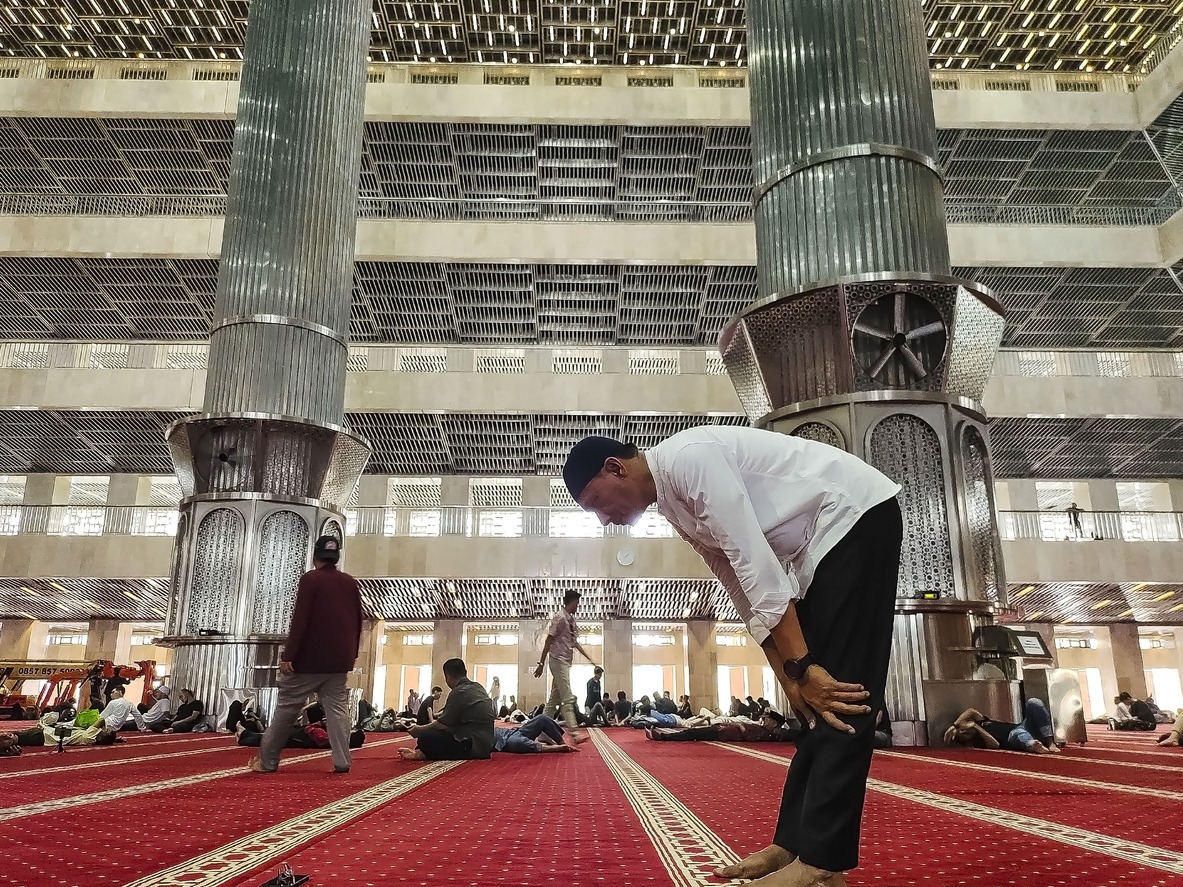

The Dhuhr prayer comprises 12 Rakats or units of prayers in the following form:
- Four Sunnah (Recommended)
- Four Fard (Obligartory)
- Two Sunnah (Recommended)
- Two Nafl (Optional)
With its many steps, this midday ritual is meant to strengthen your spiritual connection and ask Allah SWT for his blessings and mercy.
How to Perform Dhuhr Prayer?
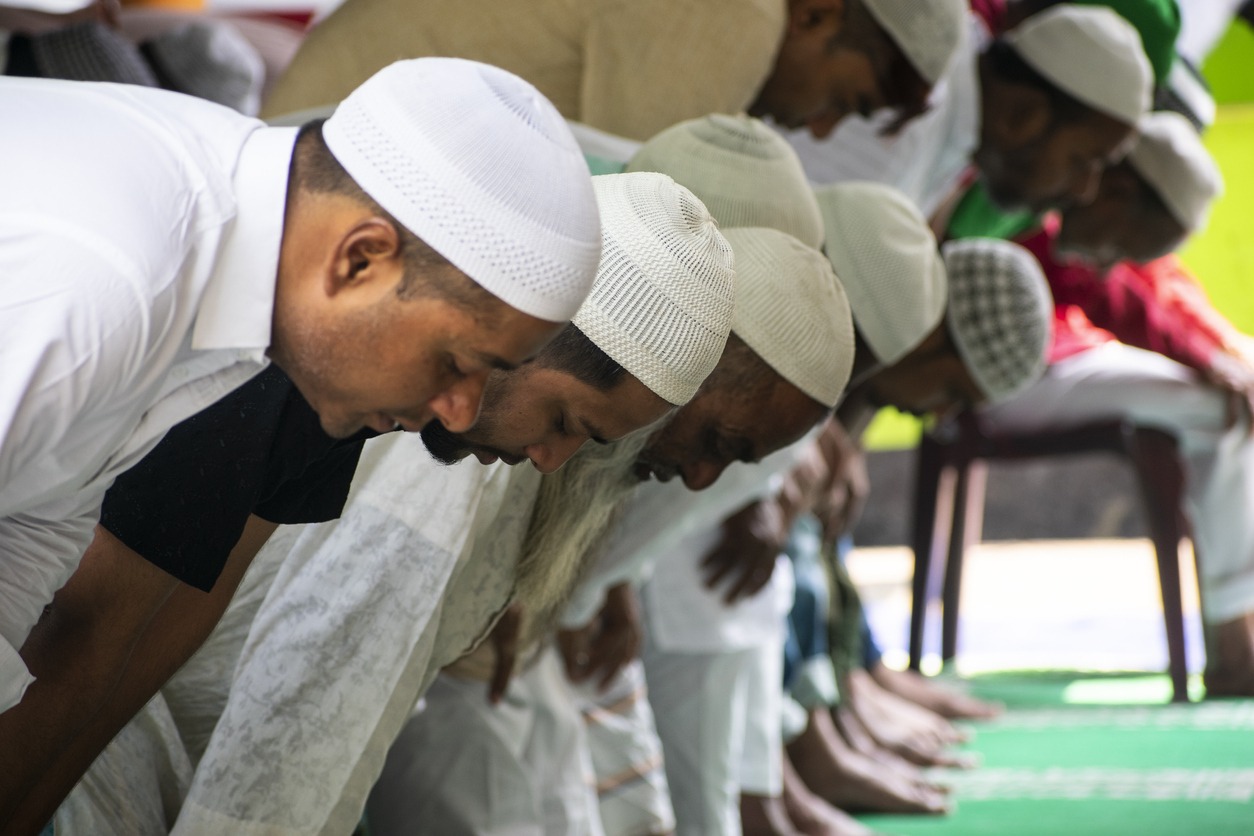

To perform the Dhuhr prayer, start by preparing for the prayer with ablution, finding a quiet place, and having the intention to perform it. Then, offer 4 Rakats of Sunnah prayers followed by 4 Rakats of Fard prayers.
Finally, conclude with 2 Rakats of Sunnah prayers, or you may perform 2 Nafl if you wish to do so.
Performing 4 Rakats Of Sunnah (or Fard):
To perform the 4 Rakats Sunnah as part of the Dhuhr prayer, follow these steps:
- Start by performing the ablution (wudhu) to purify yourself for prayer. Sunan Abi Dawud 171
- Find a clean and quiet place so you can concentrate and focus on your prayer.
- Begin with the intention (niyyah) of performing the 4 Rakats Sunnah (or Fard) of Dhuhr prayer to seek closeness to Allah SWT and earn rewards.
- Stand facing the direction of the Kaaba (Qiblah).
- Raise your hands up to your ears and say “Allahu Akbar” to start the prayer. (Book 2, Hadith 155)
- Place your right hand over your left hand on your chest, just below your navel. Sunan Abi Dawud 759
- Start with Dua of Istiftah .سُبْحَانَكَ اللّٰهُمَّ وَبِحَمْدِكَ ، وَتَبَارَكَ اسْمُكَ ، وَتَعَالَىٰ جَدُّكَ ، وَلَا إِلٰهَ غَيْرُكَ (it is only recited in the first Rakah) Sunan an-Nasa’i 900
- Seek Refuge of Allah from Satan, and begin in Allah’s name, then Recite Surah Al-Fatiha, the first chapter of the Quran, quietly or silently. (Book 2, Hadith 172)
- Follow it with a short passage or verse from any other chapter (Surah) of the Quran, known as a surah or verse recitation. Sahih Muslim 396c
- Perform a bowing position (ruku) by bending from your waist while keeping your back straight and hands resting on your knees and say “Subhana Rabbi Yal Adheem” and say it at least three times. Riyad as-Salihin 1175
- Rise from the bowing position and stand upright while saying “Sami Allaahu Liman” Hamidah” in an audible voice, which means “Allah SWT hears those who praise Him.” Sunan an-Nasa’i 1072
- Continue by saying “Rabbanaa wa lak al-hamd” silently, meaning “Our Lord, all praise is due to You.” Sunan Ibn Majah 877
- Prostrate (sajdah) by placing your forehead, nose, palms, knees, and toes on the ground while saying “Subhaana Rabb-Bi Yal Aa’la”, which means “Glory be to my Lord Almighty.” Sunan an-Nasa’i 1046
- Sit up briefly in a sitting position called jalsa and recite “Rabbighfirli” (Oh Lord, forgive me) before returning to prostration for a second time. Sunan Ibn Majah 897
- After the second prostration, stand up and follow the same steps from 8-14 for the second Rakah.
- After completing the second Sajdah in the second Rakat, sit up straight for Tashahud. Recite “At-tahiyyatu lillahi was-salawatu wat-tayyibat. As-salamu ‘alaika ayyuhan-nabiyyu wa rahmatullahi wa barakatuh” (All compliments, prayers, and pure words are due to Allah SWT. Peace be upon you, O Prophet, and the mercy of Allah SWT and His blessings). Sahih al-Bukhari 831
- Repeat steps 8 to 15 again to complete the third and fourth Rakah.
- After completing the 4th Rakat, remain seated in a sitting position and recite the Tashahud. Then recite Durood-e-Ibrahimi, and after that, recite the dua “Allahumma Rabbana atina fid dunya hasanah wa fil akhirati hasanah wa qina ‘adhaban nar” Sahih al-Bukhari 3370, Sahih al-Bukhari 4522
- Finish the prayer by turning your face to the right and saying “Assalamu Alaikum wa Rahmatullah,” meaning “Peace be upon you and Allah SWT’s “
Performing 2 Rakah of Sunnah:
The two sunnah are also performed in the same manner as described above. You only need to set your intention for praying 2 Rakah of sunnah.
But Instead of standing up after reciting tashahhud in the second Rakah, you follow it with Durood-e-Ibrahimi, and the famous dua: “Allahumma Rabbana atina fid dunya hasanah wa fil akhirati hasanah wa qina ‘adhaban nar”
Special Considerations for Dhuhr Prayer
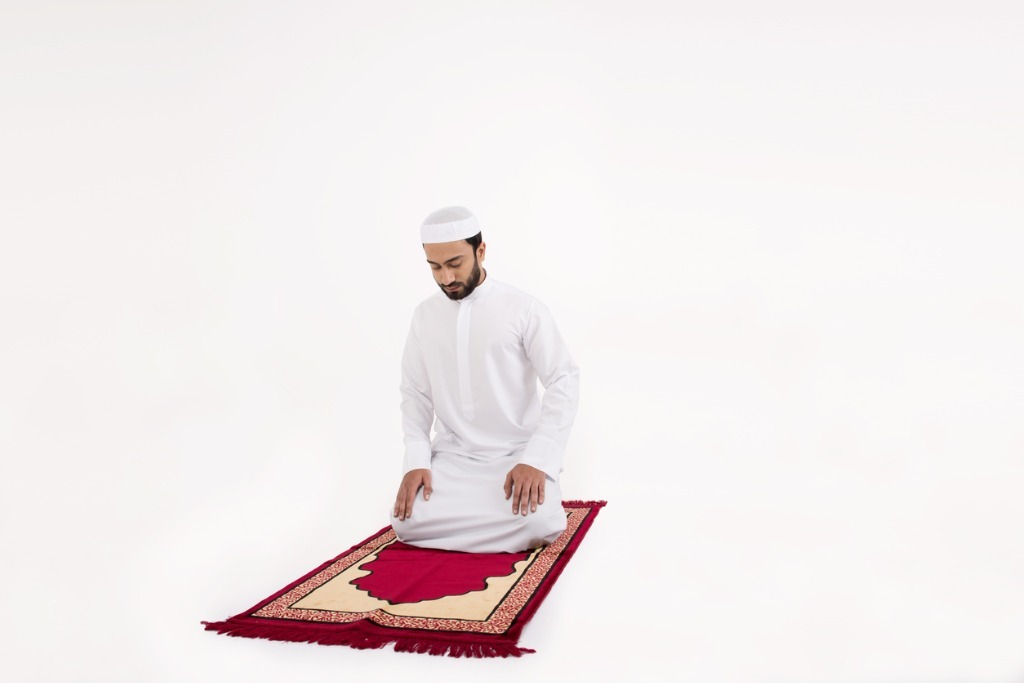

Learn the special considerations for Dhuhr Prayer on Fridays and why Dhuhr and Asr prayers are recited silently. Discover the significance behind these practices and enhance your prayer experience.
How to pray Dhuhr on Friday?
Praying Dhuhr on Friday is slightly different from the regular Dhuhr prayer. Here’s how you can perform it:
- Offer the regular 4 rakats Sunnah prayer before the Friday sermon.
- Listen attentively to the Khutbah or sermon.
- After the Khutbah, stand up and pray the 2 Rakats Fard prayer of Jumuah in congregation.
- Remember to recite Surah Al–Fatiha silently behind the Imam. There is no need to recite any other Quranic verses.
- Perform the prayer as you would for regular Dhuhr prayer, including bowing (Ruku), prostration (Sujood), and sitting between the two prostrations (Jalsa).
- Offering Friday prayer (Jummah) is obligatory for adult male Muslims.
- The Friday prayer consists of a sermon (Khutbah) delivered by an Imam before the congregational prayer.
- The regular Dhuhr prayer is incorporated into Friday prayer.
- It is recommended to perform extra acts of worship before attending Friday prayer, such as reading Surah Kahf, offering voluntary prayers, Duas and saying, “Allahuma salli wa sallem was barek ala sayyedina Muhammed.”
Why are Dhuhr and Asr recited silently?
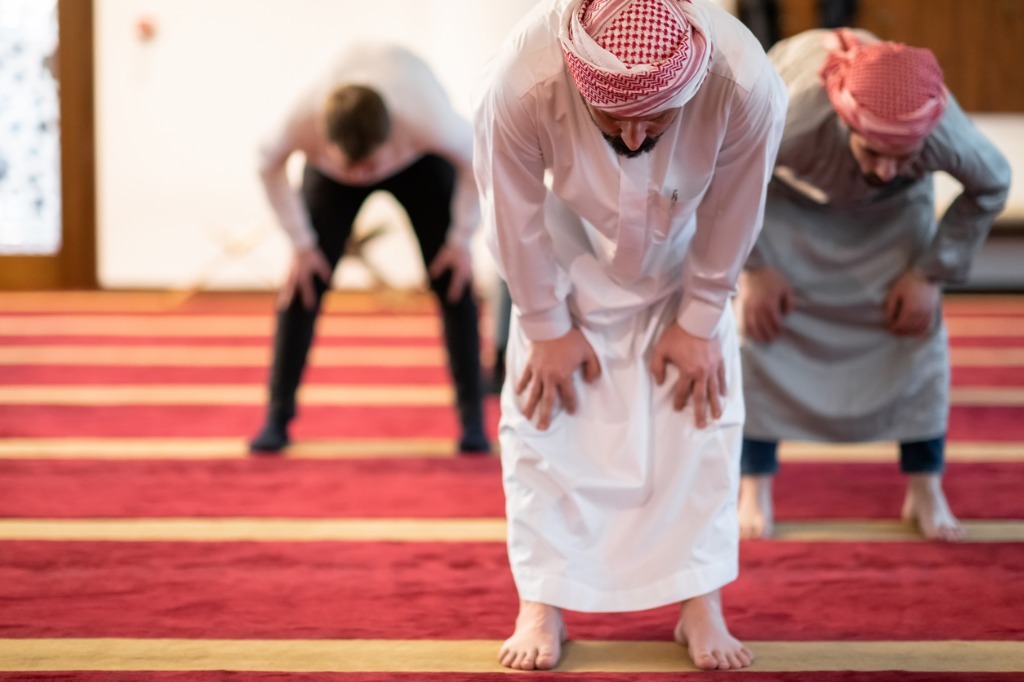

In Islam, the Dhuhr and Asr prayers are said silently to help people pay attention and be sincere. This makes it possible for people to connect with Allah SWT without any interruptions or other things getting in the way.
By saying these prayers in silence, believers can keep their minds calm and peaceful, which helps them focus on their worship. Also, saying these prayers in silence shows that our relationship with Allah SWT is personal and close.
So, when you pray the Dhuhr and Asr prayers, ensure your heart is filled with quiet devotion as you try to get closer to God.
Hadiths about Dhuhr Prayer
There are several hadiths that emphasize the importance and rewards of offering Dhuhr prayer.
According to Prophet Muhammad (peace be upon him), whoever prays four Rakats before Zuhr prayer and two Rakats after Zuhr prayer, Allah SWT will build a house for them in paradise
اثْنَتَا عَشْرَةَ رَكْعَةً مَنْ صَلاَّهُنَّ بَنَى اللَّهُ لَهُ بَيْتًا فِي الْجَنَّةِ أَرْبَعَ رَكَعَاتٍ قَبْلَ الظُّهْرِ وَرَكْعَتَيْنِ بَعْدَ الظُّهْرِ وَرَكْعَتَيْنِ قَبْلَ الْعَصْرِ وَرَكْعَتَيْنِ بَعْدَ الْمَغْرِبِ وَرَكْعَتَيْنِ قَبْلَ صَلاَةِ الصُّبْحِ ”
“Twelve rak’ahs, whoever prays them Allah SWT will build for him a house in Paradise: four rak’ahs before Zuhr and two rak’ahs after Zuhr, two rak’ahs before Asr, two rak’ahs after Maghrib and two rak’ahs before Subh prayer.”
Prophet Muhammad PBUH also said about the Duhr prayer:
وَلَوْ يَعْلَمُونَ مَا فِي التَّهْجِيرِ لاَسْتَبَقُوا إِلَيْهِ
“… and if they knew the reward of the Zuhr prayer (in the early moments of its stated time), they would race for it (go early)…”
This shows how important these extra prayers are if you want more rewards from Allah SWT. Also, regularly praying the Dhuhr prayer can keep a person from going to Hell on the Day of Judgment and bring blessings and mercy from Almighty Allah SWT.
These hadiths remind us of how important and spiritually beneficial it is to pray the Dhuhr prayer with sincerity and devotion.
Common Questions About Dhuhr Prayer
Being a central aspect of a Muslim’s daily routine, Dhuhr prayer often raises various questions. Here are some of the commonly asked ones, along with their detailed responses for your understanding:
| Common Questions | Answers |
|---|---|
| Can I delay the Dhuhr prayer if it’s very hot? | Yes, it is permissible to delay the Dhuhr prayer if the weather is extremely hot. It is based on the Sunnah of the Prophet. Sahih al-Bukhari 3259 |
| How many Rak’ahs are in Dhuhr prayer? | Dhuhr prayer consists of four Rak’ahs of Sunnat, four Rak’ahs of Fard, two Rak’ahs of Sunnat, and two Rak’ahs of Nafl. |
| Why are the hands folded over the chest during the prayer? | The hands are folded over the chest, right over left, in the standing position to emulate the example set by the Prophet. Sunan Abi Dawud 759 |
| What is the importance of the Ruku’ in prayer? | The Ruku’ is a crucial part of prayer, symbolizing humility and submission to Allah SWT. It is performed by grasping the knees firmly with hands and keeping the back straight. |
Conclusion
Dhuhr prayer is an integral part of the Islamic religion. You can build a strong connection with Allah SWT by following this step-by-step guide and understanding what it means.
Remember to pray the Sunnah and Fard prayers and to pay attention to the special rules for the Dhuhr prayer on Fridays. This midday prayer has many benefits for your body, mind, and spirit.
So, take a minute to get ready and start this beautiful journey of devotion and peace.
FAQs
What are the steps to perform Dhuhr Prayer?
Making the intention, standing and facing the qibla, raising hands and saying Allahu Akbar (Takbeer), reciting Surah Al-Fatihah and another portion of the Quran, performing ruku (bowing), rising from ruku into a standing position again, performing sujood (prostration) twice, sitting between prostrations, and concluding the prayer with greetings are all steps in performing Dhuhr Prayer.
When is the best time to perform Dhuhr Prayer?
Dhuhr Prayer is best performed after the sun has passed its zenith and before Asr Prayer. It is suggested that you pray as soon as possible within that timeframe.
Can women perform the Dhuhr Prayer during their menstrual period?
Women having their menstrual period or experiencing postnatal bleeding are not permitted to perform Salah (including Dhuhr Prayer) until they have completed their purification process. They can resume performing Salah once they have regained their purity.
Is it necessary to face Mecca while performing Dhuhr Prayer?
Yes, Muslims must face Mecca (the Kaaba) when praying any obligatory prayer, including the Dhuhr Prayer. This ensures unity in worship and represents directing one’s devotion solely to Allah SWT.
كيفية أداء صلاة الظهر: إتقان صلاة الظهر في خطوات بسيطة!
هل أنت جديد في الإسلام أو تحتاج ببساطة إلى تجديد معلوماتك حول كيفية أداء صلاة الظهر بشكل صحيح؟ الظهر هي صلاة الظهر، وهي أحد أركان الإسلام الخمسة وعمل أساسي من الخضوع والإخلاص. سنرشدك خلال كل شيء في هذا الدليل الشامل، من وقت الصلاة، وعدد الركعات المعنية، ودورها الحيوي في رحلتنا الروحية. ابق معنا، وستجد القوة والعزاء في هذا العمل المقدس في النهاية، مما يعمق اتصالك بالله سبحانه وتعالى كل يوم عند الظهر.فهم صلاة الظهر


ما هي صلاة الظهر؟
صلاة الظهر، والمعروفة أيضًا بصلاة الظهر، لها مكانة مهمة في الطقوس اليومية للمسلمين المتدينين. إنها الصلاة الإسلامية الرابعة في اليوم، والتي تُؤدى عادةً عند غروب الشمس. باتجاه الغرب من ذروته في السماء.متى تصلي صلاة الظهر؟
إن تحديد ذروة الشمس هو بداية صلاة الظهر، التي تمثل جزءًا مهمًا من يوم كل مسلم. تأتي صلاة الظهر هذه بعد الفجر (صلاة ما قبل الفجر) وتسبق العصر (بعد الظهر)، والمغرب (المساء)، والعشاء (ليلاً). الوقت المثالي لهذه الفريضة الإسلامية اليومية يتراوح بين الساعة 12 ظهرًا والساعة 1:30 ظهرًا، اعتمادًا على كل يوم والموقع الجغرافي. يجب أن تنحدر الشمس نحو الغرب من ذروتها قبل الشروع في هذه الصلوات، مع احترام طبيعتها المقدسة وتوقيتها. خلال أشهر الصيف أو الحرارة الشديدة، فكر في تأخير صلاة الظهر للتخفيف من أي إزعاج قد تواجهه أثناء صلاتك. كما أمر النبي محمد أيضًا في أحد أحاديثه: " . قَالَ ابْنُ مَوْهَبٍ " بِالصَّلاَةِ فَإِنَّ شِدَّةَ الْحَرِّ مِنْ فَيْحِ جَهَنَّمَ ". فإذا اشتد الحر فصلوا الظهر إذا برد نسبيا، فإن الحر الشديد من غليان جهنم. سنن أبي داود 402 يبدأ العصر في آخر الظهر، فينتهي الظهر بدخول العصر. وهذا يجعل الوقت المناسب للعبادة. تذكر أن المدارس الإسلامية المختلفة قد يكون لديها أفكار مختلفة حول أوقات معينة. ومع ذلك، فإن معظمهم متفقون على هذا الإطار المشترك.كم عدد ركعات صلاة الظهر؟


- السنن الأربع (مستحسن)
- أربعة فرائض (إلزامية)
- السنتان (مستحسن)
- اثنتين نافلة (اختياري)
كيف تصلي صلاة الظهر؟


أداء 4 ركعات من السنة (أو الفرض):
لأداء ركعات الأربع كجزء من صلاة الظهر، اتبع الخطوات التالية:- ابدأ بالوضوء لتطهير نفسك للصلاة. سنن أبي داود 171
- ابحث عن مكان نظيف وهادئ حتى تتمكن من التركيز والتركيز على صلاتك.
- ابدأ بنية أداء ركعات صلاة الظهر الأربع ركعات للتقرب إلى الله سبحانه وتعالى وكسب الأجر.
- قف في مواجهة اتجاه الكعبة (القبلة).
- ارفع يديك إلى مستوى أذنيك وقل "الله أكبر" لبدء الصلاة. (الكتاب الثاني، الحديث 155)
- ضع يدك اليمنى على يدك اليسرى على صدرك، أسفل السرة مباشرةً. سنن أبي داود 759
- ابدأ بدعاء الاستفتاح .سُبْحَانَكَ اللَّه وَبِحَمْدِكَ ، وَتَبَارَكَ اسْمُكَ ، وَتَعَالَى جَدُّكَ ، وَلَا إِلهَ غَيْرُكَ (لا يُقرأ إلا في الركعة الأولى) سنن النسائي 900
- استعيذ بالله من الشيطان، وابدأ بسم الله، ثم اقرأ سورة-الفاتحة، أول سورة في القرآن، بهدوء أو بصمت. (الكتاب الثاني، الحديث 172)
- اتبعها بآية قصيرة أو آية من أي سورة أخرى من سور القرآن، تعرف بسورة أو تلاوة آية. صحيح مسلم 396ج
- قم بأداء وضعية الركوع (الركوع) عن طريق الانحناء من خصرك مع الحفاظ على استقامة ظهرك ووضع يديك على ركبتيك وقل "سبحان ربي يالعظيم" وقلها ثلاث مرات على الأقل. رياض الصالحين 1175
- انهض من الركوع واقفًا منتصبًا مع قول "سامي الله ليمان" حميدة" بصوت مسموع، أي "سمع الله سبحانه لمن حمده". سنن النسائي 1072
- استمر بقول "ربنا ولك الحمد" بصمت، أي "ربنا ولك الحمد". سنن ابن ماجه 877
- اسجد (سجدًا) بوضع جبهتك وأنفك وكفيك وركبتيك وأصابع قدميك على الأرض مع قول "سبحان ربي يالأعلى"، والتي تعني "سبحان ربي" الرب عز وجل." سنن النسائي 1046
- اجلس لفترة وجيزة في وضعية الجلوس وقرأ "رب اغفر لي" (رب اغفر لي) قبل العودة إلى السجود للمرة الثانية. سنن ابن ماجه 897
- بعد السجدة الثانية، قم واتبع نفس الخطوات من 8 إلى 14 للركعة الثانية.
- بعد الانتهاء من السجدة الثانية في الركعة الثانية، اجلس مستقيمًا للتشهد. اقرأ "التحيات لله وصلاة وطيبات. السلام عليك أيها النبي ورحمة الله وبركاته". رحمة الله تعالى وبركاته). صحيح البخاري 831
- كرر الخطوات من 8 إلى 15 مرة أخرى لإكمال الركعة الثالثة والرابعة.
- بعد الانتهاء من الركعة الرابعة، ابق جالسًا وتلاوة التشهد. ثم اقرأ الدرود الإبراهيمي، وبعد ذلك اقرأ دعاء "اللهم ربنا آتينا في الدنيا حسنة وفي الآخرة حسنة وقنا أدهب نار" صحيح البخاري 3370, صحيح البخاري 4522
- اختم الصلاة بتحويل وجهك إلى اليمين وقول "السلام عليكم ورحمة الله" أي "السلام عليكم وعلى الله سبحانه وتعالى"
أداء ركعتين من السنة:
وتؤدى السنتان أيضاً بنفس الطريقة التي سبق ذكرها. ما عليك سوى أن تحدد نيتك لصلاة ركعتين من السنة. لكن بدلاً من القيام بعد التشهد في الركعة الثانية، تتبعه بالصلاة الإبراهيمية، والدعاء الشهير: "اللهم ربنا آتينا في الدنيا حسنة وفي الآخرة حسنة وقنا أدهب نار".اعتبارات خاصة بصلاة الظهر


كيف تصلي الظهر يوم الجمعة؟
صلاة الظهر يوم الجمعة تختلف قليلا عن صلاة الظهر العادية. وإليك كيف يمكنك القيام بذلك:- قم بصلاة السنة الراتبة الأربع ركعات قبل خطبة الجمعة.
- استمع بانتباه للخطبة أو الخطبة.
- بعد الخطبة، قم وصلي ركعتين صلاة الجمعة جماعة.
- تذكر قراءة سورة آل-الفاتحة سهرًا خلف الإمام. ولا داعي لتلاوة أي آيات قرآنية أخرى.
- أدي الصلاة كما تفعل في صلاة الظهر الراتبة، بما في ذلك الركوع والسجود والجلوس بين السجدتين (الجلسة).
- إقامة صلاة الجمعة واجبة على المسلمين الذكور البالغين.
- تتكون صلاة الجمعة من خطبة يلقيها الإمام قبل صلاة الجماعة.
- تم دمج صلاة الظهر المنتظمة في صلاة الجمعة.
- ينصح بأداء عبادات إضافية قبل حضور صلاة الجمعة، مثل قراءة سورة الكهف، والتطوع، والدعاء، وقول: "اللهم صل وسلم على سيدنا محمد".
لماذا تُقرأ الظهر والعصر سرًا؟



